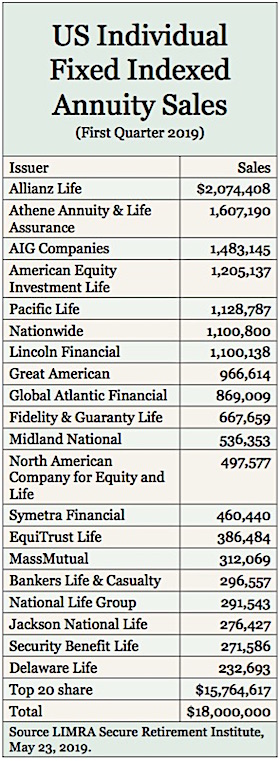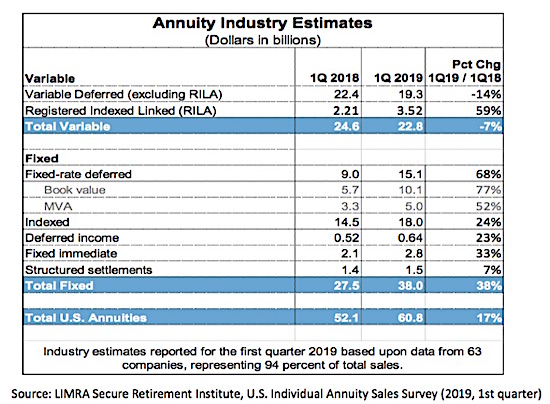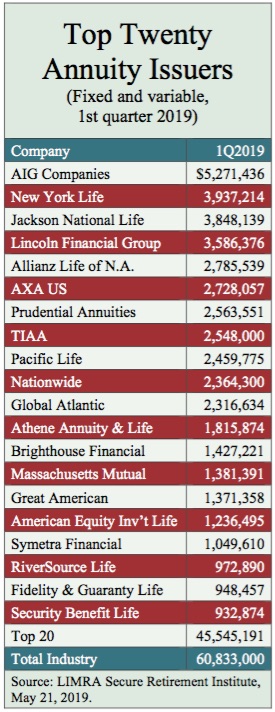Bank of America offers new hybrid advice model
Bank of America has launched a hybrid human/digital advisory service that merges access to a Merrill Financial Solutions Advisor to users of Merrill Guided Investing, an online investment advice platform, the bank said in a release this week.
The new service is called, “Merrill Guided Investing with an advisor.” It “expands the continuum of services that Merrill offers to investors,” a Bank of America spokesperson told RIJ.” Merrill Edge Self Directed, Merrill Guided Investing, the new Merrill Guided Investing with an advisor, and Merrill Lynch Wealth Management are all part of the continuum and of the Merrill umbrella. Our goal is to serve investors at every stage of wealth accumulation.”
Clients of the new service will work with a Merrill advisor to identify priorities, define financial goals, and track progress toward those goals. Costs and benefits of the hybrid program include:
- Access to 25 investment strategies built and managed by Merrill’s Chief Investment Office (CIO). Only 15 strategies are offered through the digital-only version of Merrill Guided Investing.
- A minimum initial deposit of $20,000. The account minimum for Merrill Guided Investing is $5,000.
- An annual service fee of 0.85%, plus fund expenses, compared to 0.45% for Merrill Guided Investing.
The hybrid services will be offered through FSAs in Bank of America financial centers, Merrill Advisory Centers, and Merrill offices in the U.S. In April, the company announced plans to hire over 300 FSAs to be located in Merrill offices this year, adding to the 2,700 FSAs currently on staff. Clients with more assets will be referred to one of Merrill Lynch Wealth Management’s nearly 15,000 financial advisors.
Clients of the Merrill Guided Investing offerings are eligible for an annual program fee discount of up to 0.15% if they are members of Bank of America’s Preferred Rewards program.
Launched in February 2017, Merrill Guided Investing was enhanced in March 2019 with features that allow clients to create financial plans based on all their assets. Late last year, the service added “impact portfolios” as an investment option so that clients could align investments with their values. Since then, 20% of new clients have selected that option.
Combined client balances for the company’s guided investing and self-directed platforms were about $211 billion on March 31, 2019.
Fidelity adds 150 new ETFs to its no-load ETF supermarket
Fidelity Investments, the $7.6 trillion, family-owned Boston-based financial services giant, said this week that it will add nearly 150 exchange-traded funds (ETFs) from 11 ETF manufacturers to its menu of proprietary ETFs and hundreds of BlackRock iShare funds.
Fidelity now offers more than 500 high-quality ETFs for online purchase with no sales commission through some 28 million brokerage accounts at Fidelity. The new ETF manufacturers include: American Century, First Trust, Franklin Templeton, Goldman Sachs Asset Management, Invesco, Janus Henderson, John Hancock Investments, J.P. Morgan Asset Management, Legg Mason Global Asset Management, PIMCO and State Street Global Advisors SPDR ETFs.
The ETFs in the lineup have an average expense ratio of 0.36% and represent 69 Morningstar categories. Industry assets under management in Fidelity’s available commission-free ETFs account for 40% of the overall U.S. ETF market, and Fidelity has more than $450 billion in ETF client assets under administration, the release said.
The free-commission offer applies only to online purchases of select ETFs in a Fidelity brokerage account. The sale of ETFs is subject to an activity assessment fee (from $0.01 to $0.03 per $1,000 of principal).
The Fidelity ZERO Total Market Index Fund (FZROX), Fidelity ZERO International Index Fund (FZILX), Fidelity ZERO Large Cap Index Fund (FNILX), and Fidelity ZERO Extended Market Index Fund (FZIPX) are now available to individual retail investors who purchase their shares through a Fidelity brokerage account.
Pacific Life taps Salesforce for CRM services
Pacific Life has selected Salesforce, the customer relationship management (CRM) software firm, as one of its strategic technology partners “to get a 360-degree customer view and deliver seamless and integrated experiences across its entire U.S. retail businesses,” Salesforce announced this week.
More specifically, Pacific Life partnered with Salesforce on “the NextGen CRM Program,” which is designed to bridge the gap between Pacific Life’s sales, service and marketing teams and “reimagine how they engage with financial professionals.”
Pacific Life is deploying Salesforce as its enterprise-wide, integrated CRM platform to streamline customer engagement and connect with customers through traditional call centers or through digital channels such as email, social chat and text.
Pacific Life is also “tapping into an ecosystem of distribution partners using APIs” or application programming interfaces. A network of reusable APIs will enable Pacific Life to integrate with digital platforms like Blueprint Income.
Pacific Life will use Salesforce’s Financial Services Cloud, Einstein Analytics, Einstein Data Discovery, Marketing Cloud, MuleSoft, Quip, the Salesforce Lightning Platform and Success Cloud advisory services.
RetireUp can now model Great American annuities
Retirement income planning software provider RetireUp announced this week that it will add Great American Life’s fixed-indexed annuities (FIAs) to the lineup of modeled products available on its client-advisor platform, RetireUp Pro.
The Great American contracts include the American Landmark 5, American Legend 7, AssuranceSelect 5 Plus, AssuranceSelect 7 Plus, Premier Bonus and Premier Income Bonus.
The RetireUp Pro platform enables advisors to model insurance products within a client’s portfolio, allowing them to demonstrate the potential benefits of adding an annuity to a retirement plan.
Dynamic Wealth Advisors to use RetireOne’s RIA insurance platform
RetireOne, the no-commission annuity sales platform, has agreed to provide insurance and annuity back office services for clients of Dynamic Wealth Advisors, a turnkey wealth management platform for fee-based registered investment advisors (RIAs), the firms said in a release this week.
Under the agreement, RetireOne will provide an online platform for the purchase of no-load insurance and annuity products, along with distribution, education, and ongoing support services through RetireOne’s Advisor Solutions Desk.
“This is significant for our wealth managers who develop holistic financial plans incorporating solutions that optimize tax efficiency, and manage longevity risk, sequence of returns risk, and other risks,” said Dynamic Wealth Advisors COO, Craig Morningstar, in the release.
A part of Aria Retirement Solutions, RetireOne provides over 900 RIAs and fee-based advisors access to fee-based insurance products from multiple A-rated companies through its independent online platform. Dynamic Wealth Advisors produces myVirtualPractice, a virtual office and wealth management practice with staff, back/middle office, accounting/billing, compliance services and a Virtual Assistant.
Lincoln to expand broker education, use Goldman Sachs securities lending service
Lincoln Financial Group has launched a Broker Development Institute to further enhance its broker education and training program, which includes Continuing Education and non-CE courses. The Institute is a two-day educational event, including best practices, case studies and industry trends on a particular industry topic or trend.
The first Broker Development Institute took place on April 23 in Atlanta, Ga., and was focused on the employee leave landscape and absence management trends, a Lincoln release said. The Institute will continue throughout the country this year, and will expand to include other market topics.
Lincoln’s group benefits business offers employee benefits products and solutions, including disability and leave management, as well as life, dental, accident, critical illness and vision insurance coverages.
In other news, Lincoln Financial Network (LFN), the retail wealth management affiliate of Lincoln Financial Group, agreed to offer the Goldman Sachs Private Bank Select securities-based lending solution to LFN advisors and their clients.
GS Select is an online loan origination and servicing program that combines digital technology with personalized support to provide clients access to liquidity for tuition, home purchases and renovations, bridge financing and start-up funding. GS Select uses diversified, non-retirement investment assets in a client’s pledged account as collateral.
© 2019 RIJ Publishing LLC. All rights reserved.



 sellers of retirement plan services more than the interests of the buyers of those services. Lawmakers don’t appear to have haggled for measures that would spark demand for annuities—perhaps by giving in-plan annuities unique advantages.
sellers of retirement plan services more than the interests of the buyers of those services. Lawmakers don’t appear to have haggled for measures that would spark demand for annuities—perhaps by giving in-plan annuities unique advantages.







